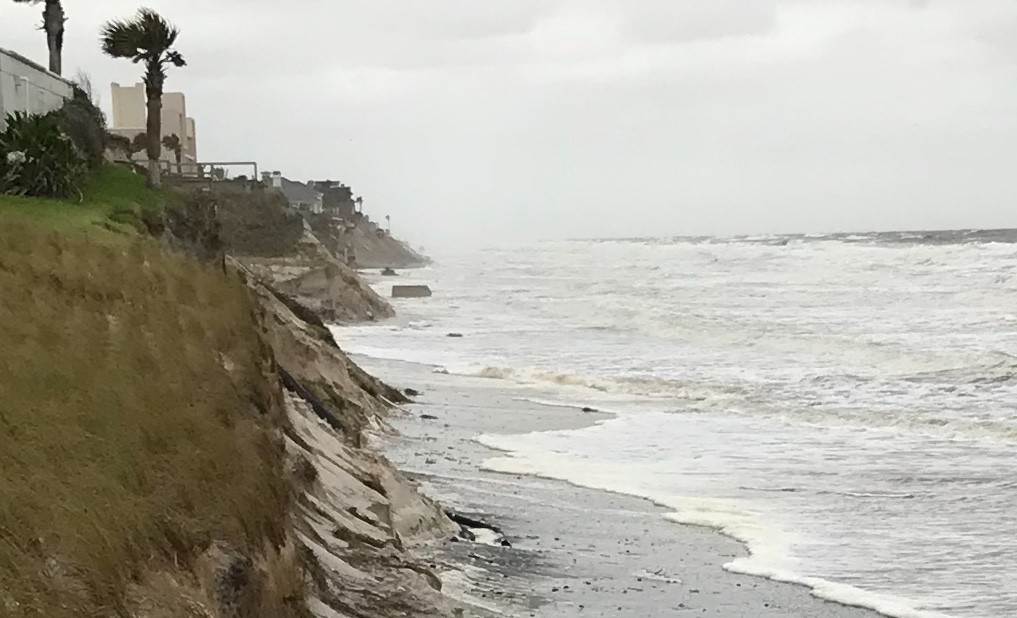Commissioner Dean: It’s time to ‘fish or cut bait’ on beach restoration
County Commission to vote Oct. 16 on bed tax increase
Next Tuesday, Oct. 16, the St. Johns County Board of County Commissioners will finally provide an answer to the “will they-won’t they” question of the year by voting to either approve or reject a 1-percent increase in the county’s tourist development tax to help fund beach renourishment. With time running out to shore up support for the proposal, Commission Chair Henry Dean said it’s now or never for those who wish to save the county’s beaches.
“Really, it’s fish or cut bait, next Tuesday,” Dean said regarding the upcoming vote. “We need at least four of our five commissioners to vote for this, and I hope that we have that support.”
The tourist development tax, commonly known as the “bed tax,” is a tax on short-term living accommodations and is currently levied at 4 percent in St. Johns County. According to county officials, increasing the tax to 5 percent could generate an additional $2.2 million annually for beach renourishment, the push for which has been mounting since Hurricanes Matthew and Irma exacerbated the county’s longstanding problem of coastal erosion.
Currently, St. Augustine Beach is the only portion of St. Johns County that has an ongoing beach restoration program. Help for South Ponte Vedra and Vilano beaches, however, may not be far off, as not only has the state approved funding for a one-time sand placement due to the impacts of Hurricane Matthew, but the U.S. Army Corps of Engineers will also be spending federal funds on a long-term beach renourishment program for that area.
The downside, however, is that for the one-time sand placement, the county will still be responsible for paying half the cost of the roughly $20-million project, and for the long-term project, the county will need to contribute about $19.1 million. Further, Ponte Vedra Beach proper will not benefit from either of those projects.
Dean, who advised that the county is looking into a low-interest loan with a 30-year payback period for the federal project, contended that there would be no point in moving forward with any projects without the bed tax increase.
“What we’ve tried to do as best we know how is to come up with a way to fund both our portion of the federal project and the 50-percent match to the state’s one-time placement,” he said. “We also need to do the first steps in doing what we can for the Ponte Vedra Beach area … but without the 1-cent increase in the bed tax, the foundation of our house crumbles and our whole effort for restoring and renourishing these beaches, from Vilano up to Ponte Vedra Beach, basically falls.”
Citing a 2018 study done by James R. Houston of the U.S. Army Engineer Research and Development Center, Dean noted that the beaches are Florida’s top attraction not only for tourists, but also for potential homebuyers, and that neglecting the beaches could have dire economic consequences for St. Johns County as a whole.
“Already this year, because of the damage from Matthew and Irma, property values along the beachfront — home values and land values — have gone down about 20 percent,” he said. “If we lose our beach protection, not only will there be damage to those homes east of A1A, there’ll be damage to those homes west of A1A, so I think it’s justifiable to say that we could be subject to a potential loss of up to 20 percent of our ad valorem revenue if we don’t take the bull by the horns and protect and renourish our beaches.”
Adding that the Tourist Development Council unanimously voted to recommend the increase, Dean also pointed out that most of St. Johns’ neighboring counties levy a bed tax of 5 percent or more. In Flagler and Clay counties, for instance, the tax is levied at 5 percent, and in Duval and Volusia counties the tax is as high as 6 percent.
Local support for beach renourishment has been strong among beachfront property owners, with a portion of the funding for the Vilano and South Ponte Vedra Beach projects already being collected through a municipal service taxing unit. The county also recently conducted a survey regarding a potential MSTU for Ponte Vedra Beach proper, to which 92 percent of respondents (443 property owners) answered favorably.
Stressing the urgency of the situation, Dean said that the point of no return for St. Johns County’s beaches may in fact come with next Tuesday’s vote.
“We have to do something,” he said, “because if we reject the 1-percent increase in the bed tax, I’ve played my last card. I don’t know what to play next — I’m out of aces — so it’s critical, in my opinion, that we go forward.”







